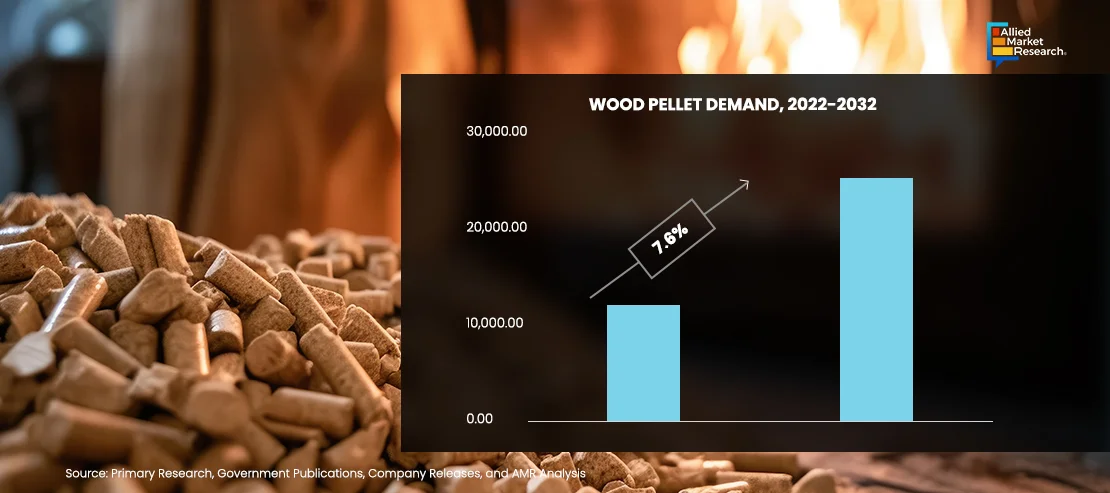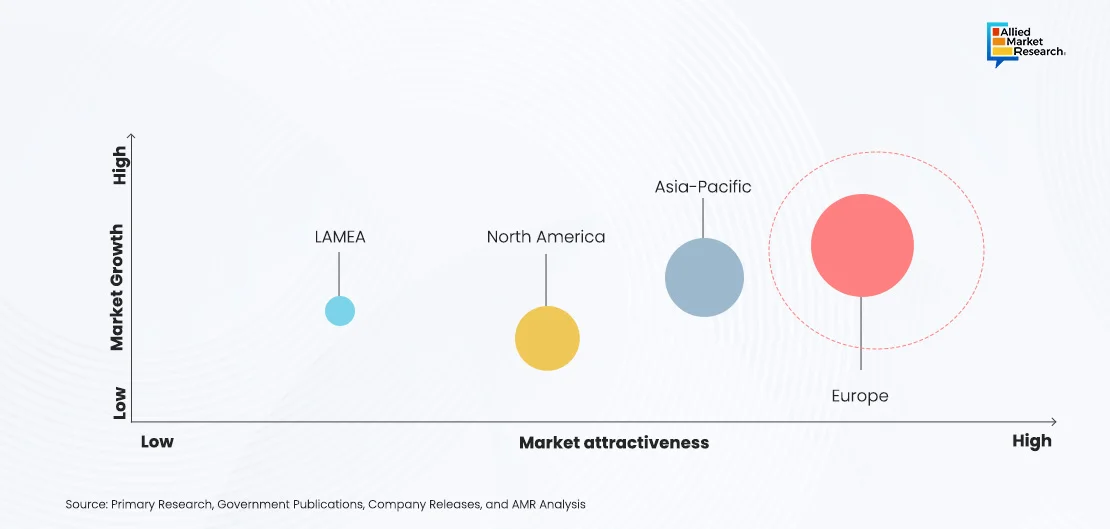Table Of Contents

Sonia Mutreja

Pooja Parvatkar
Wood Pellet Fuel: Potential in Bioenergy (Renewable) Industry

Wood pellet fuel known as biomass pellets is a type of renewable energy derived from compacted sawdust, wood shavings, and other wood by-products. These small cylindrical pellets have become increasingly popular as an alternative to traditional fossil fuels due to their eco-friendly nature, efficiency, and ease of use. Wood pellet fuel can be used in various heating systems, including stoves, boilers, and biomass power plants, providing heat and electricity for residential, commercial, and industrial purposes. The development of combined heat and power (CHP) systems has enabled the simultaneous generation of heat and electricity from wood pellets, maximizing the efficiency of energy utilization.
Biomass power plants generate electricity and heat by burning organic materials such as wood pellets and agricultural residues. Wood pellets have high energy density, making them efficient for power generation. Biomass power plants using wood pellets emit fewer greenhouse gases and pollutants than fossil fuel power plants, aiding in meeting emissions reduction targets and environmental regulations. These pellets are manufactured using wood fiber derived from various sources such as sawmill residues and forest byproducts. Availability of these materials depends on factors such as logging activities, weather conditions, and rise in demand for other wood products.
The Past Landscape
The world has been facing an energy crisis in recent years driving attention to sustainable living. The increasing concerns with climate change and global warming have prompted an urgency to explore environmentally friendly activities. The wood pellet industry has also thus gained importance, aiming to provide an alternative fuel source. Today, the industry boasts a significant presence globally with wood pellets being used for heating, electricity generation, and as a fuel alternative for fossil fuels.
The demand for wood pellets has also witnessed impressive growth and is expected to experience an exponential increase in the coming years.

The global wood pellet fuel market size was valued at more than $12 billion in 2022, and is projected to reach $25 billion by 2032, growing at a CAGR of 7.6% from 2023 to 2032.
Wood pellets have a high energy density and low moisture content, which contributes to their high energy efficiency and consistent burning characteristics. Due to their compact and uniform shape, wood pellets have a higher energy content as compared to raw wood or wood chips. This makes them more efficient for storage, transportation, and combustion, leading to less waste and more efficient heat production as compared to traditional firewood.
Current Adoption and Use Cases
Bioenergy is produced from organic material, known as biomass, which contains carbon absorbed by plants through photosynthesis. The carbon in this biomass is liberated after combustion and goes back into the atmosphere when it is used to generate energy. Modern bioenergy is almost entirely emission-free since it absorbs carbon in proportion to the amount of biomass produced. With 55% of renewable energy and more than 6% of the world's energy supply coming from biomass, it is the greatest renewable energy source worldwide. There are several distinct sources of bioenergy. Certain bioenergy sources are the byproduct of an industrial operation that would have happened anyhow, such black liquor from the making of paper. Often, bioenergy comes from intentionally planted trees or crops, which requires a lot more area to produce than other energy sources. When utilized to generate electricity, bioenergy offers dispatchable, low-emission power to supplement fluctuating renewable energy sources. From producing roughly 700 TWh of electricity (or 2.5% of the entire demand) in 2022 to roughly 1,300 TWh (or 3.5% of the total demand) in 2030, its utilization nearly doubles. The bioenergy market is anticipated to grow at more than 7% between 2022 and 2032, as stated by Allied Market Research.
Europe at the Forefront of Adoption
Europe is the most preferred investment pocket in the wood pellet fuel market globally. Introduction of national regulations and EU Directives toward renewable energy utilization is anticipated to act as one of the major factors for high demand of wood pellets. Wood pellets are widely used in Europe in various industries for logistics and transportation purposes. These versatile platforms are essential for the efficient movement and storage of goods in a wide range of sectors. Wood pellets serve as the backbone of European supply chains, enabling the smooth flow of goods from manufacturers to retailers and consumers. They are commonly used in industries such as manufacturing, agriculture, pharmaceuticals, retail, and many others. The main advantage of wood pellets lies in their affordability, durability, and ease of repair. They can withstand heavy loads, provide stability, and facilitate the use of material handling equipment such as forklifts and pellet jacks.

Application of Wood Pellets
The on-shore wind energy had high generation capacity as compared to off-shore in 2022. However, there may arise times (winters, and monsoon) when renewable energy will not be able to meet the national grid requirements. Energy storage technologies are expected to be created and implemented on a scale that can adequately buffer erratic and variable supply and maintain the stability of the power grids for most of the time. Part of the issue is resolved by using pellet fuel made from biomass that is constantly replenishing. Utility power plants that currently run on coal can be modified to run on enhanced densified biomass-derived solid fuel made from continuously renewing (rather than depleting) sources in place of coal with comparatively little expense and downtime. As a result, demand-driven renewable electricity generation is possible.
One of the primary reasons for rise in use of wood pellet fuel in power generation is its environmental friendliness. Biomass, including wood pellets, is considered carbon neutral since the carbon dioxide released during combustion is roughly equivalent to the amount absorbed by the plants during their growth. As a result, wood pellet fuel helps reduce greenhouse gas emissions compared to burning fossil fuels, contributing to efforts in combating climate change and promoting cleaner energy production. Power plants utilizing wood pellets are often designed to be flexible in their fuel sources, allowing them to switch between wood pellets and other biomass or even fossil fuels. This adaptability enhances energy security and reduces dependency on finite fossil fuel reserves, making power generation more resilient to fuel supply fluctuations and geopolitical issues.

Future Growth Prospects
Sustainability has gained importance as consumers and businesses seek assurances towards a green future. Wood pellets have a short carbon cycle and therefore are considered carbon neutral. Wood pellets are renewable & sustainable and can be replenished through natural processes. Thus, advancements in technology with respect to wood pellets are expected to provide sufficient development prospects for the expansion of the global wood pellet fuel market in the future years.
For further insights, get in touch with AMR analysts.

